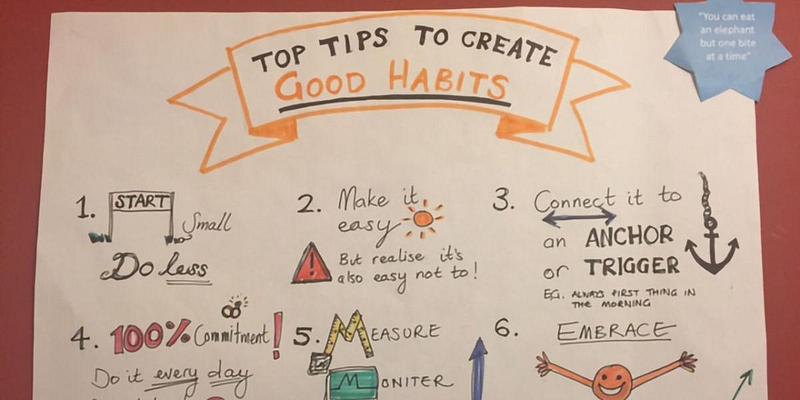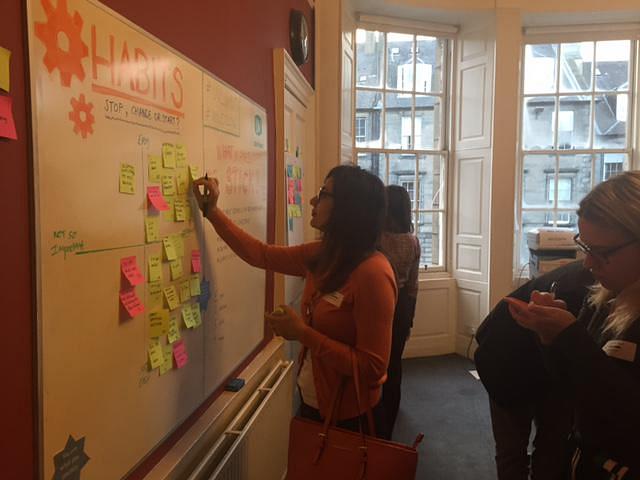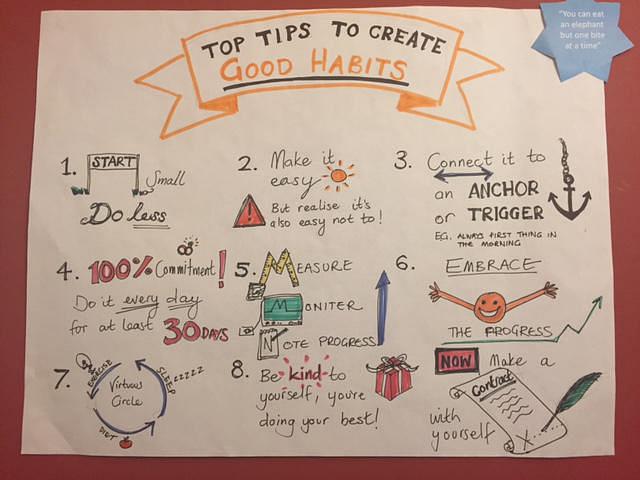Creating Habits that stick
9 January 2017 - Abi Reynolds

New year, New you.
Had enough of the turkey curry, giving alcohol a rest for January, or simply excited about starting something new in your life? What better time to start positive change than the beginning of a new year right? We all know willingness is high at this time of year but sometimes the ability to see through those changes is rather low. So how do we ensure our good intentions become reality? By creating good habits of course! And making one small change at a time.
Changing behaviours at World Usability Day (WUD) in User Vision

Each year User Vision celebrates WUD by holding an open house to showcase great user experiences by presenting a set of workshops, product demos and activities.
The theme for WUD this year was sustainability and how we as UX’ers can go about creating experiences that encourage people to change their behaviour for the power of general good.
To do this, we held a session about creating positive habits. To being with, we asked participants what personal habits they would like to stop, change, or start? We then discussed how best to go about creating those habits and what techniques participants could use to ensure those habits stuck.
What habits do you want to create?
We asked participants to think about one small change they would like to make to their lives in the next 30 Days.
As Matt Cutting said, in his inspirational Ted talk ‘Try something New for 30 Days’, keeping a new habit small, making it specific, and committing to it for a 30-day period, increases the likelihood of success.
So, when participants told us they would like to ‘do more exercise’ we asked them to be more specific about what that meant for them e.g. ‘do a 15-minute walk every day’.
A very popular theme that emerged was that participants wanted to better manage their engagement with technology. They wanted to be less prone to constantly checking emails / social media and to have more quality ‘off’ time with their friends and families.
Creating Habits that last: Anchor them
Creating small changes is easy to do. But as we know, it is also easy not to do. In the next part of our session, we looked at what participants could do to ensure their new habits become part of their daily routines.

Many of these concepts are reflected in the work of BJ Fogg, (this will open in a new window)the Stanford professor and innovator, and his ‘tiny habits’ programme.
Fogg maintains that adding ‘anchors’ that trigger the new habits are an important part of the habit-forming process. Therefore, if the habit we wanted to create was ‘take a 15-minute walk every day’, it’s important to associate that with an anchor such as; walking at the same time every day e.g. such as first thing in the morning.
Serious about creating that new habit? Make a contract with yourself
Research tells us that if we write down our goals we are more likely to achieve them.
In the final part of our workshop – we asked participants to write down the specifics of their new habit in a ‘Habit Contract’, and to commit to the new behaviour for the next 30 days.
And to encourage our participants even further, we asked them to leave us their email addresses so we could check up on them 30 days later to see how they are getting on – We haven’t checked yet, but we will. You know who you are.
If you missed our session or have already missed the 1st of the year deadline new year resolutions, no problem as the best time to start practising a new habit is right now.
Keep checking by to read more about what we did during WUD.
You might also be interested in...
Bridging Business Analysis and User Experience: Achieve Outstanding Digital Results
24 November 2025Discover how aligning Business Analysis and User Experience transforms digital projects - boosting efficiency, user satisfaction, and ROI for organisations seeking exceptional results in today’s competitive market.
Read the article: Bridging Business Analysis and User Experience: Achieve Outstanding Digital ResultsUsing the Kano Model to Drive Product Success
14 October 2025The Kano Model helps product teams understand what drives customer satisfaction. Features are grouped as Mandatory, Satisfier, Delighter, Indifferent, or Rejectors - each affecting the user experience in different ways. By balancing these feature types, teams can make smarter decisions, avoid clutter, and build products that truly delight users.
Read the article: Using the Kano Model to Drive Product SuccessConsumer Duty Compliance: Measuring Outcomes That Matter
4 March 2025Explore how financial services can move beyond traditional satisfaction metrics to master outcome measurement for Consumer Duty compliance. Learn about Key Experience Indicators (KEIs) and strategic approaches with User Vision's expertise.
Read the article: Consumer Duty Compliance: Measuring Outcomes That Matter